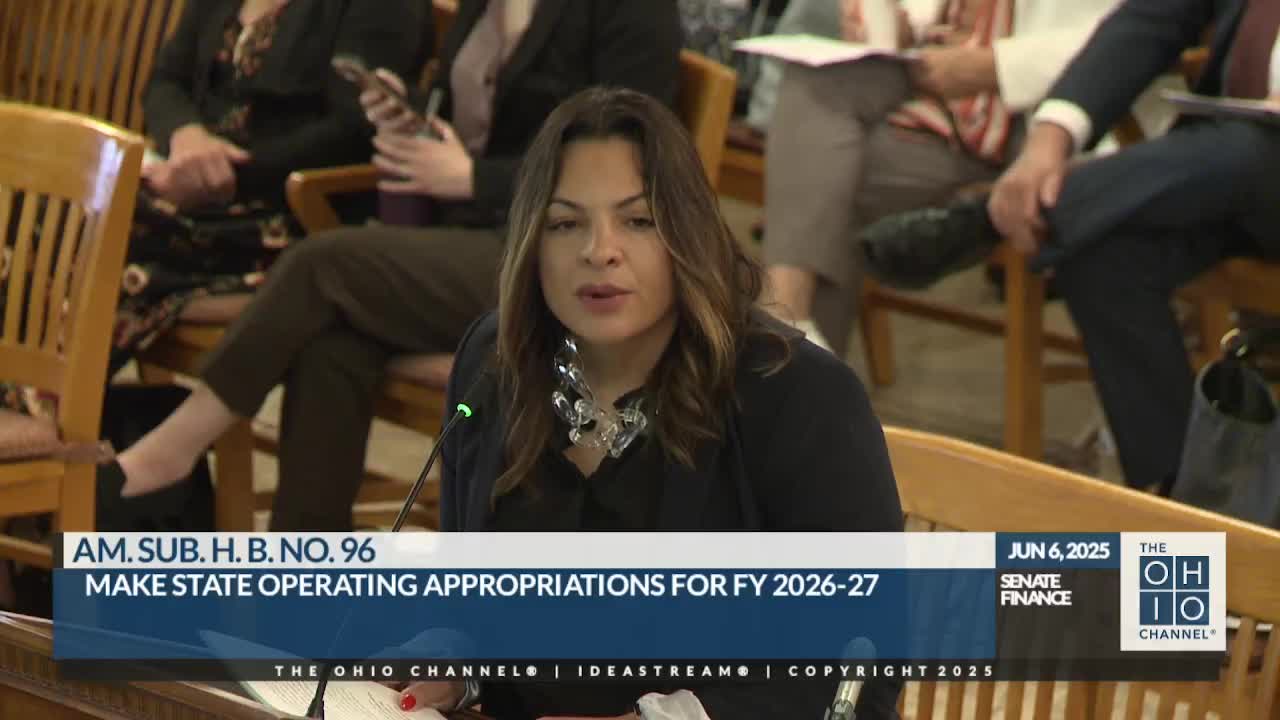Ohio agencies collaborate to tackle youth issues statewide
May 30, 2025 | Finance, Senate, Committees, Legislative, Ohio
This article was created by AI summarizing key points discussed. AI makes mistakes, so for full details and context, please refer to the video of the full meeting. Please report any errors so we can fix them. Report an error »

In a recent meeting of the Ohio Senate Finance Committee, discussions centered on critical issues affecting youth and senior care across the state. The meeting highlighted the importance of strategic investments and collaboration among various agencies to address these challenges effectively.
A representative from a youth-focused organization emphasized the need for a coordinated approach to support young people throughout Ohio. They noted that their agency, based in Central Ohio, serves as the largest fiscal agent for affiliates statewide, ensuring that resources are distributed equitably. This structure is vital, as funding shortfalls in Central Ohio can directly impact services available in other regions, such as Hamilton and Butler counties. The representative underscored that the concerns for youth are not limited to one area but resonate across the entire state, affecting communities from Southwest to Southeast Ohio.
Additionally, Susan Wallace from Leading Age Ohio presented the challenges faced by their members, which include nursing homes, assisted living facilities, and affordable senior housing. With approximately 400 members statewide, Wallace acknowledged the pressing issues within the sector, particularly in light of the Senate's decision to reduce the Medicaid budget. This decision raises concerns about the sustainability of services for vulnerable populations, including seniors who rely heavily on Medicaid for their care.
The discussions during the meeting reflect a broader concern about the allocation of resources and the impact of budgetary decisions on essential services for both youth and seniors in Ohio. As the committee continues to navigate these complex issues, the outcomes of their deliberations will be crucial in shaping the future of support systems for these demographics.
Moving forward, stakeholders will be watching closely to see how the committee addresses these challenges and whether they can find a balance between budget constraints and the needs of Ohio's youth and elderly populations. The implications of these discussions are significant, as they will influence the quality of life for many residents across the state.
A representative from a youth-focused organization emphasized the need for a coordinated approach to support young people throughout Ohio. They noted that their agency, based in Central Ohio, serves as the largest fiscal agent for affiliates statewide, ensuring that resources are distributed equitably. This structure is vital, as funding shortfalls in Central Ohio can directly impact services available in other regions, such as Hamilton and Butler counties. The representative underscored that the concerns for youth are not limited to one area but resonate across the entire state, affecting communities from Southwest to Southeast Ohio.
Additionally, Susan Wallace from Leading Age Ohio presented the challenges faced by their members, which include nursing homes, assisted living facilities, and affordable senior housing. With approximately 400 members statewide, Wallace acknowledged the pressing issues within the sector, particularly in light of the Senate's decision to reduce the Medicaid budget. This decision raises concerns about the sustainability of services for vulnerable populations, including seniors who rely heavily on Medicaid for their care.
The discussions during the meeting reflect a broader concern about the allocation of resources and the impact of budgetary decisions on essential services for both youth and seniors in Ohio. As the committee continues to navigate these complex issues, the outcomes of their deliberations will be crucial in shaping the future of support systems for these demographics.
Moving forward, stakeholders will be watching closely to see how the committee addresses these challenges and whether they can find a balance between budget constraints and the needs of Ohio's youth and elderly populations. The implications of these discussions are significant, as they will influence the quality of life for many residents across the state.
View full meeting
This article is based on a recent meeting—watch the full video and explore the complete transcript for deeper insights into the discussion.
View full meeting
